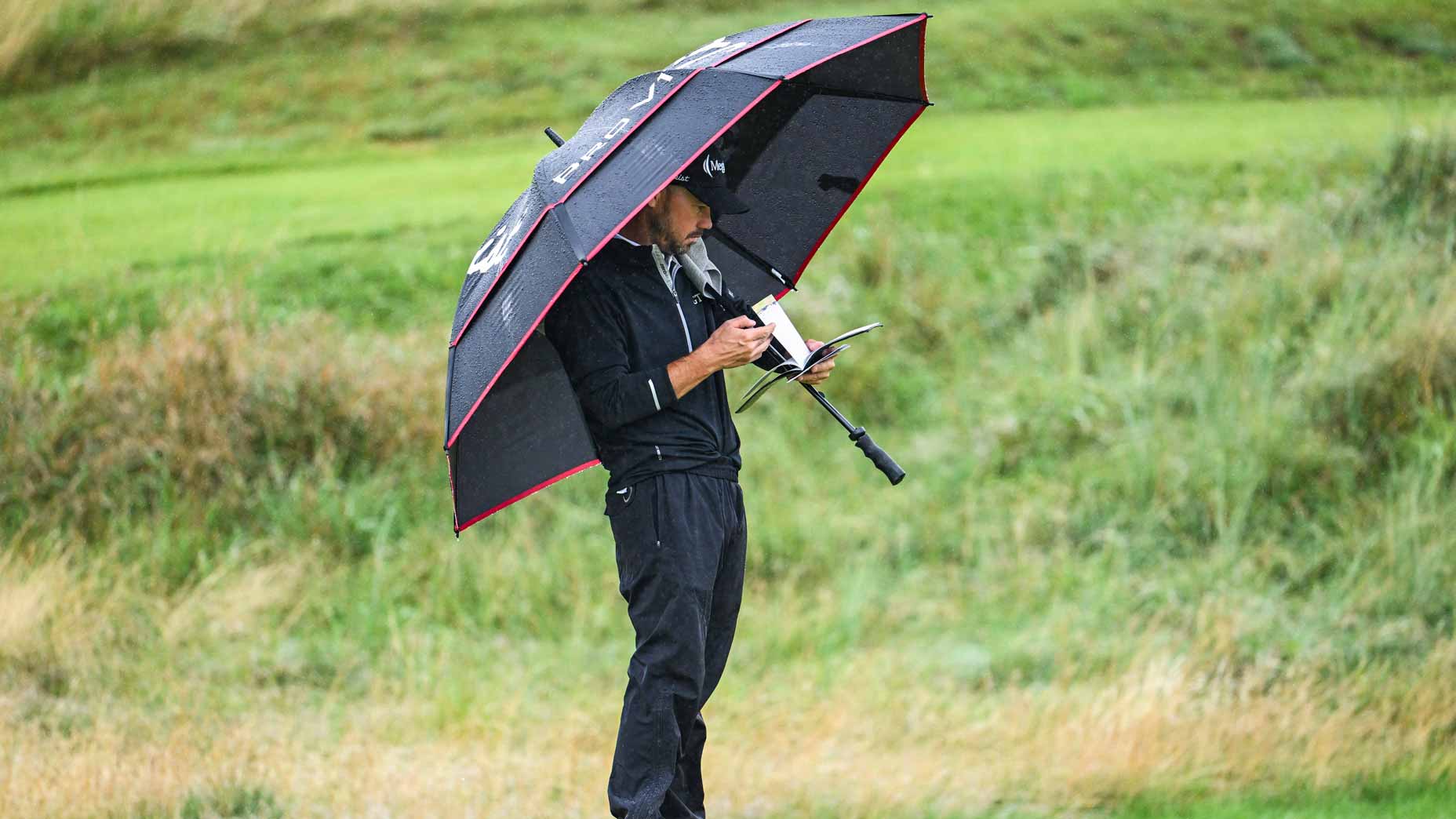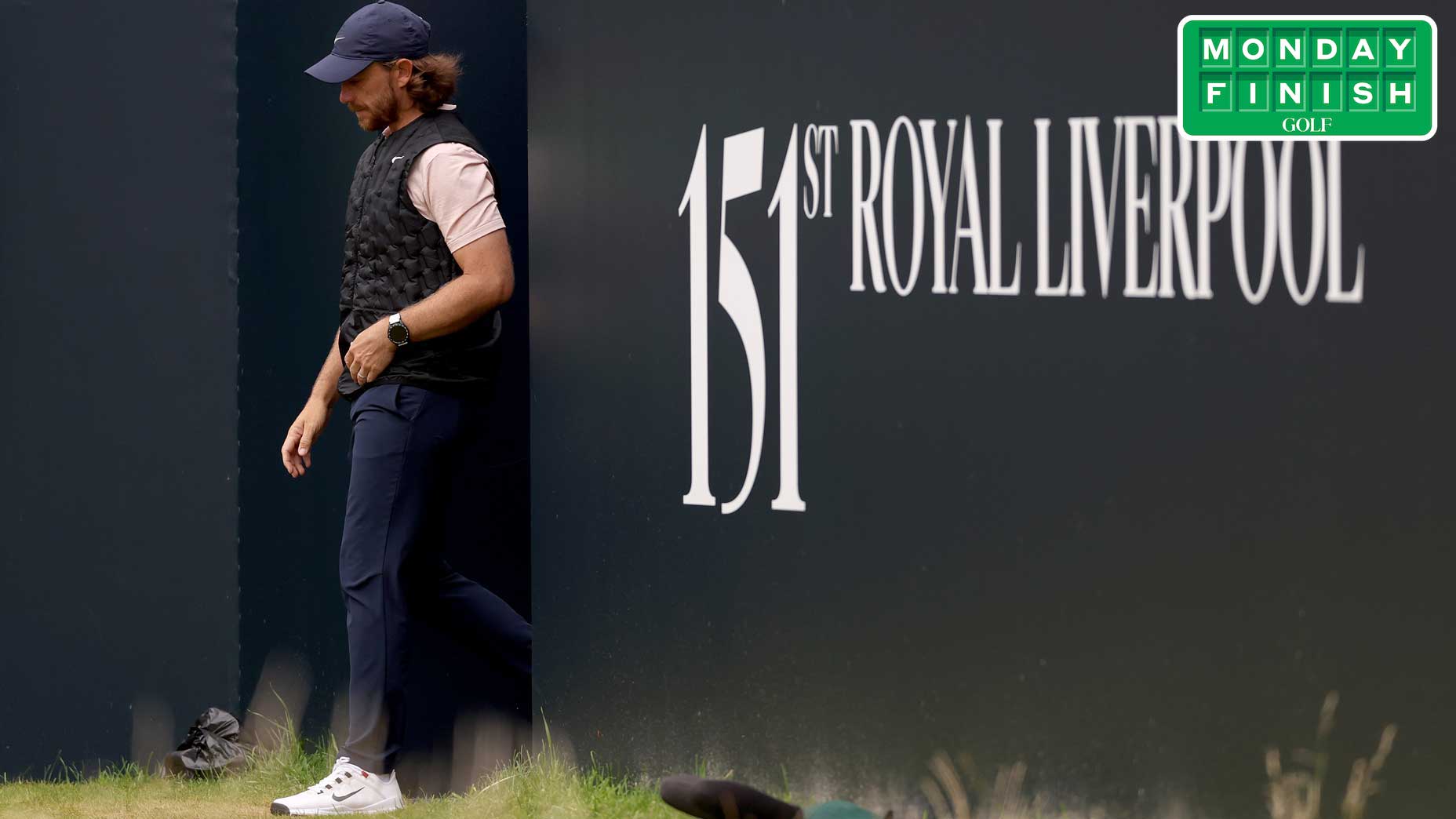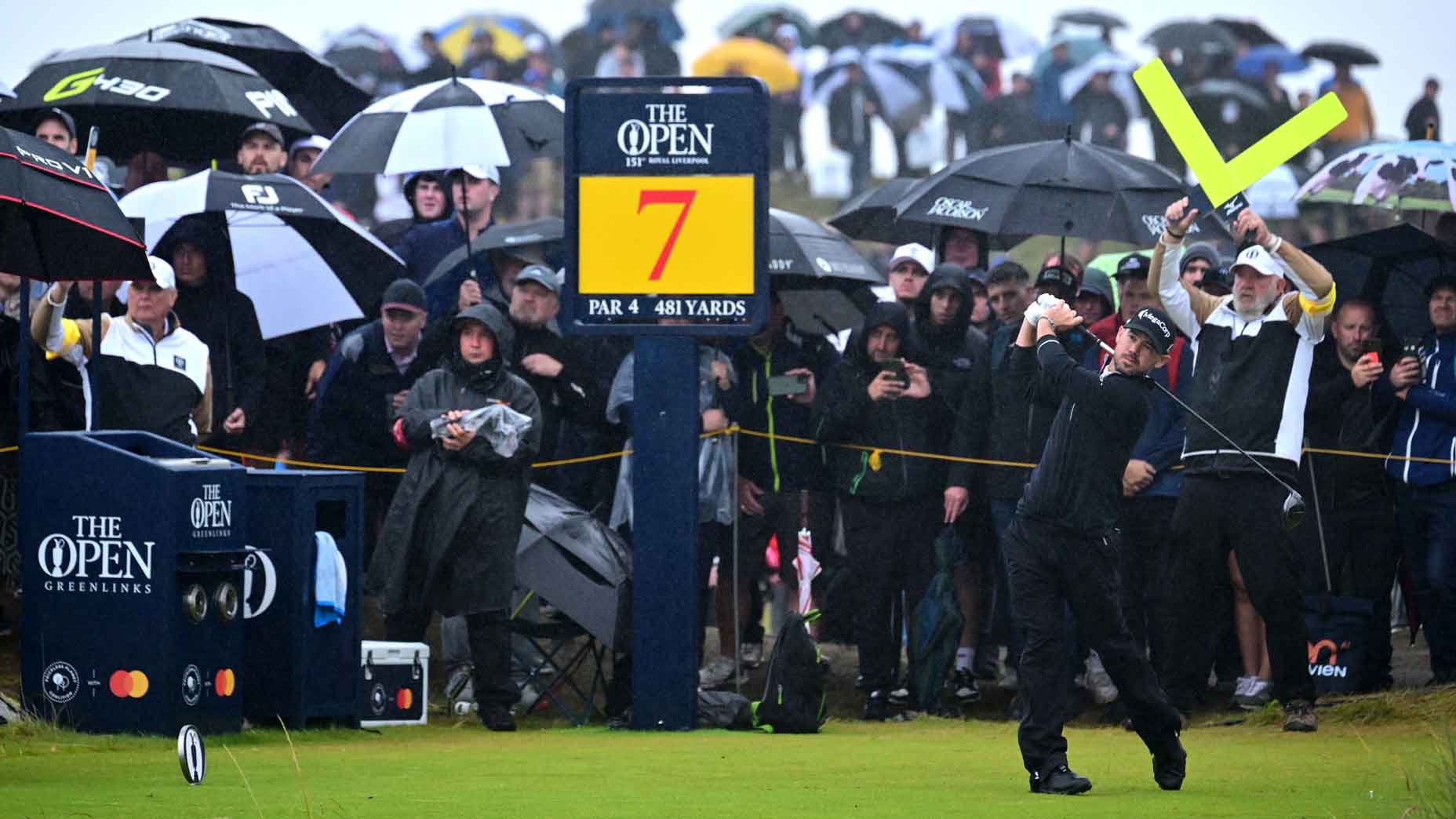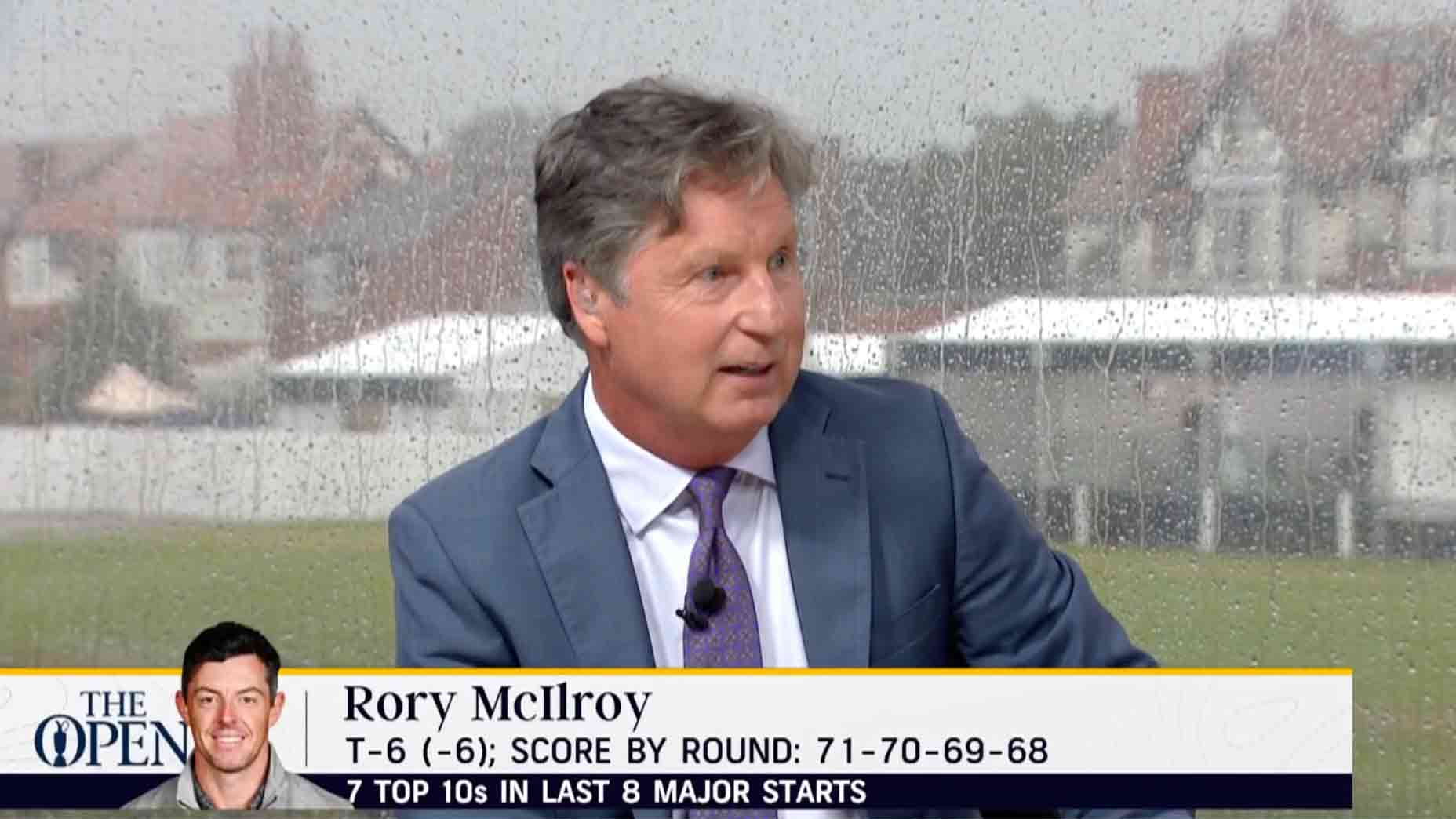‘Fair or unfair?’ Nervy par-3 hot debate topic at Open Championship
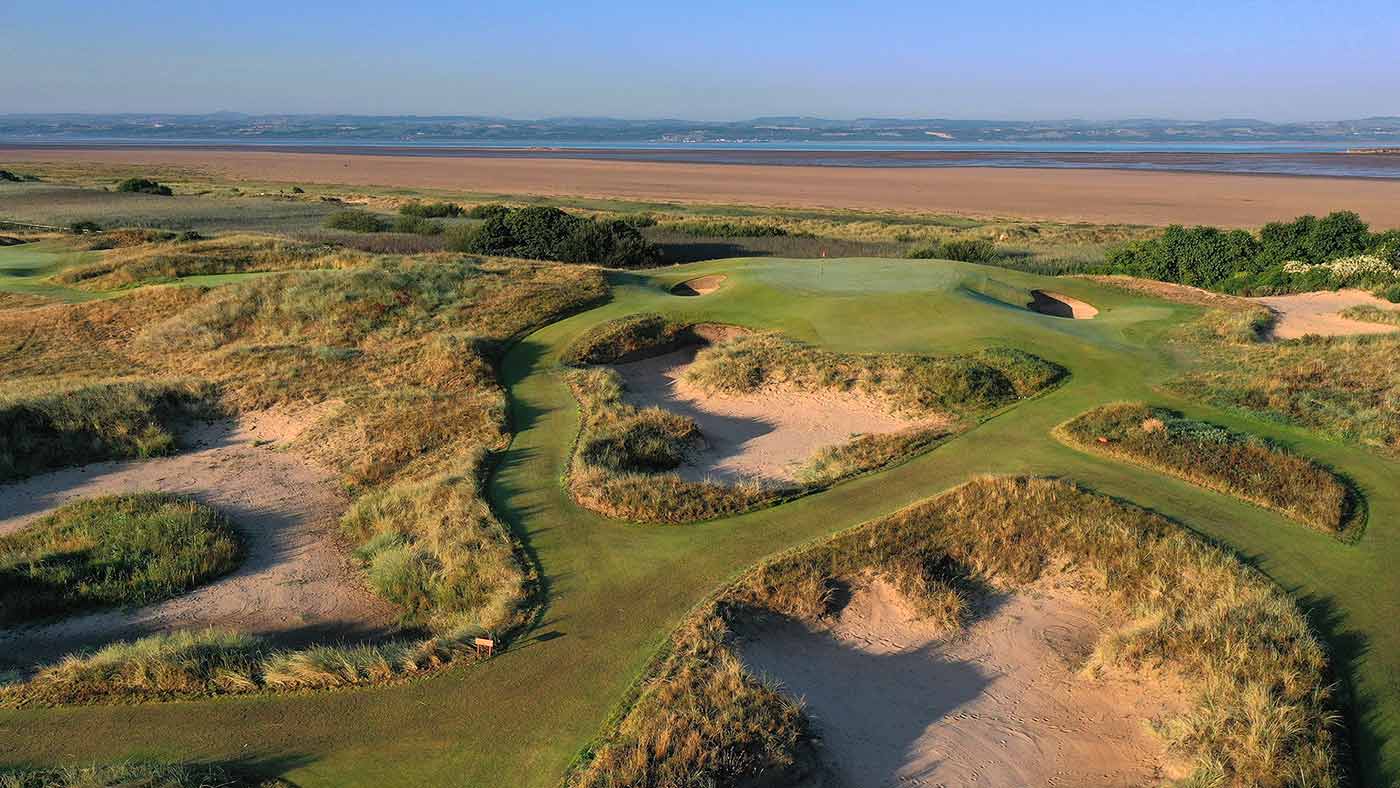
The par-3 17th at this week's Open Championship will play a crucial role in deciding the week's winner.
R&A via Getty Images
HOYLAKE, England — In his Tuesday press conference at Royal Liverpool, Jon Rahm was asked about the new par-3 17th hole. Nearly everyone has been asked about it, so you know it’s going to be a crucial part of the tournament. Or that it’s already controversial.
Anyway, Rahm was asked about it, gave his opinion and, later, was asked to clarify: Is it fair, or unfair?
“I said it’s fair, because if it’s unfair, it’s unfair to everybody, so it’s the same for all of us,” he said. “It can’t be unfair. It’s the same for all of us. It’s way more difficult than it was before.”
The 136-yard hole — dubbed “Little Eye” — will be a pivotal part of this week’s 151st Open Championship. For starters, it’s a new hole, which is almost unheard of at these ancient Open Championship courses.
After the 2014 Open here, the club and the R&A decided they needed a change, something that would help create a little more drama near the finish. They approached Mackenzie & Ebert design and said they wanted to flip the par-3 15th hole and make it short.
Now, instead of having a par-3 play away from the sea, they are playing toward it. But that’s not all.
“The old 15, par-3, was the complete opposite of the hole,” Rahm said. “You have a short downhill hole most likely downwind with basically all the edges sloping toward the center of the green. I thought it was a good hole. You could make a birdie, and if you miss the green, a bogey was lurking. This time they made a really difficult turtle-shell par-3. If you hit a good shot, put it on the green, you have a clear look at birdie. If you miss the green, you have a clear look at bogey. It’s hard to say anything is fair or unfair because it’s so short.”
The horizon-line green — at roughly 3,700 square feet, half the size of an average green at Royal Liverpool — sits just in front of the Dee Estuary and is elevated from the tee box. The turtleback green will dispose of any shot that lingers on the edge, which is the hole’s primary defense.
At 136 yards, it’s 25 yards shorter than the reversed par-3 in 2014.
A miss short funnels balls into into a front-left pot bunker, and a miss green-high left runs into a bunker on that side. But the most extreme slope is on the right, leading to a devilish trap with a high face that would give any high-handicapper nightmares.
There’s a natural sandy area behind the green as well (which drops off about 15 feet), so anything long means unpredictable lies.
Now that players have had a couple of days to test it out, they’ve been asked to chime in. Matt Fitzpatrick called it “interesting.” Asked to elaborate, he said, “I’ll leave it at that.”
Kopeka also used that word — “interesting” — but his connotation wasn’t as negative as Fitzpatrick’s.
“If you get a crosswind there, it could be pretty interesting,” Koepka said. “I’m a big believer in the short par-3s, make it difficult, exactly like that. I’m not a huge fan of 260, 250. It kind of takes — I don’t want to say the excitement out of it, but it’s kind of boring. You already know it’s a 3-iron and everybody is hitting to the same spot, where I think all the best par-3s in the world that have ever been designed are 165 yards or shorter.”
As examples, Koepka cited the 12th at Augusta National, the 17th at TPC Sawgrass and 8th at Royal Troon.
“There’s a bunch of them, and you can walk away with 5 just as easy as you could birdie it,” he said. “I like it.”
Cameron Smith agreed the hole will induce drama. He said he played it into a 30 or 40 mph wind on Sunday, and he hit a 7-iron.
“There’s not much room for error up there,” he said, “and I think it’ll be a really exciting finish to an Open Championship for sure.”
On Tuesday, fans gathered on a hill left of the green and in the bleachers to the right, cackling as balls tip-toeing on the edge plummeted down below.
“It’s really not quite hard,” one fan said to his buddies. “Just don’t miss left, don’t miss right, don’t miss short or don’t miss long.”
In one group, Dustin Johnson and Koepka both hit the green, as Gary Woodland missed right into the bunker. Johnson spent much scouting the green, walking from the back edge all the way to the front bunker. When his caddie/brother Austin dropped a ball on the front of the green, it rolled off some 30 feet below.
“We all have to play the same holes,” Rahm said. “If you hit a good shot, you’ll definitely most likely have a birdie chance. If not, you’ll deal with it. I get you’re going for that on a championship Sunday. You have a one-shot lead, that hole can be pivotal.”




